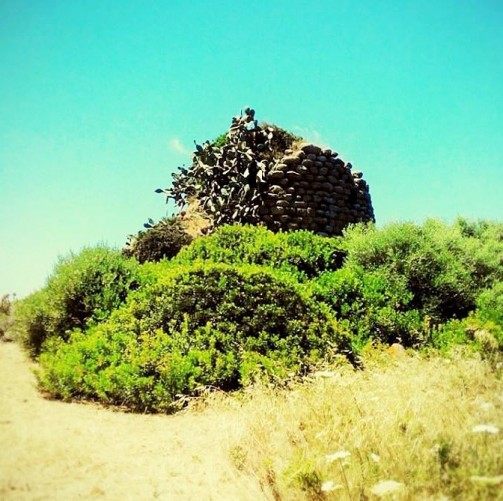Nuraghi are the clearest evidence of the cultural phase that affected Sardinia between the 19th and 11th centuries B.C., known as the Nuragic Culture. The Nieddu nuraghe stands on a modest rise in the locality of Nuragaddu, a short distance from streams that originally flowed into the Gennano pond and fed the surrounding land. It has a tholos, or false vault, structure. The outer diameter measures about 11.5 meters. The masonry is made of basalt blocks. It is preserved in elevation for a height of about 8.50 meters. The blocks are placed in 21 horizontal rows. Apparently the structure is a single-tower nuraghe. The plan of the chamber is circular, with three side niches arranged in the shape of a cross and a chamber with an entrance niche. The monument has an architectural peculiarity: the andito staircase does not cross the wall thickness of the tower following a spiral path, as is the case in most cases, but at about 4.5 meters from the beginning it turns to the right and then folds back to the left, thus cutting across the axis of the corridor. The presence of blocks around the nuraghe and the finding of ceramic fragments suggest the existence of living structures (presumably constituting a village). A small treasure of Roman coins was also found in the area. The scattering of materials is indicative of the frequentation of the area in prehistoric and historic times.
A few hundred meters away from the Nuraghe Nieddu is clearly visible a building that from documentary sources and ceramic finds in the surrounding area should date back at least to the seventeenth century. The existence, attested by the sources, of the medieval village of “Nuracatti” and the close connection of this name with today’s toponym “Nuragaddu “suggest that the location of the settlement was right near the seventeenth-century building or that it is even the only surviving element, still visible today, of the medieval village. The building is half single-story and half two-story. The rooms are rectangular in shape and the rooms are of modest size. The intended use can be attributed thanks to the micro-toponym “Su Conventu,” still documented in nineteenth-century maps, in which the building is referred to as the “House of the Jesuit Fathers.”









